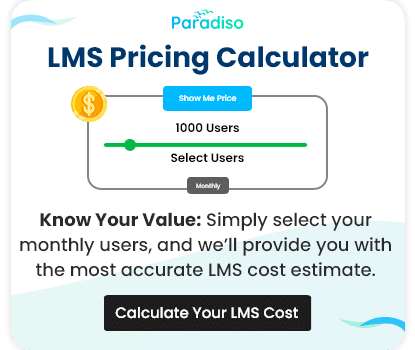Top LMS Features for Continuing Education
Automatic Electronic Transmission of CE Credits to Governing Bodies
The LMS you use for your CE courses should be able to provide verification of completed courses and credits gained to the association or governing body handling the CE program in question, in addition to being able to print customized certificates for specific CE credits. This LMS feature for continuing education gives your learners peace of mind while also making their lives easier.
Course Management and Content Creation
Your LMS should ideally give you the capabilities to administer your courses in a streamlined manner while also allowing you to develop visually appealing and engaging course content. This includes the ability to integrate several learning modalities (PDFs, photos, videos, and so on) and effortlessly organize them in an aesthetically pleasing structure and functional interface that encourages student retention and engagement.
Course locking
Course locking is one of the most important LMS features of continuous education software. If inactivity is detected or if the student stops interacting with the course material, the course will lock in to ensure that every student completes the course and is engaged with it. All LMS for professional training must have this feature to ensure optimum learner engagement.
Certificates
Certificates from CE courses created with an LMS should be customized to meet the needs of the state, federal, or regional accrediting body that oversees the CE program. A course number, account number, accreditation number, or a specific image or data to be displayed on the created certificates are all possible requirements. As a CE provider, the LMS you choose should be able to meet all of these requirements.
eCommerce integration
This LMS feature for CE is very crucial, yet not found in many LMS platforms. Your LMS platform should be able to accommodate a range of payment alternatives for your CE courses, including fully free courses, courses redeemable with a voucher or code gained through a promotion, and, of course, courses that need payment by credit card or PayPal.
Ability to Add Restrictions in A Course
A simple, yet powerful LMS feature for CE. A video and course parts must have some constraints on how they are watched to guarantee that students do not skip segments of a video or fast-forward through content and absorb all course material. To that end, we recommend that only students be able to play or pause videos and that course content is required to be seen in its entirety.
Video integration
Sometimes picture is worth a word, and in an eLearning course, a video is the next best thing to in a traditional classroom setting. Make sure your LMS platform offers videos and integrates with numerous different video hosting sites to ensure that all of your students succeed, especially those with a visual or auditory learning style.
Social learning
Interaction between learners and their teachers is a fundamental element of the educational process that promotes student engagement and reinforces the content matter of the subject they are studying, whether through a plugin with a participating social media site or through students being able to interact with each other inside the LMS through bulletin boards or live lecture classes.
Accredited course provider status
Because CE is related to licensure and professional certifications by its very nature, it’s also critical for an LMS to be able to validate the certified course provider status of the business providing the CE training. This LMS feature for continuing education makes the eLearning platform complete.










